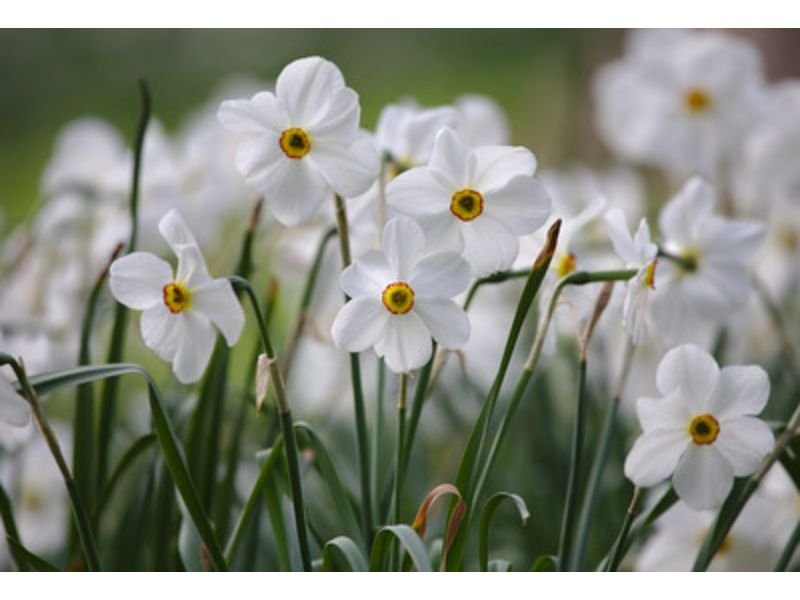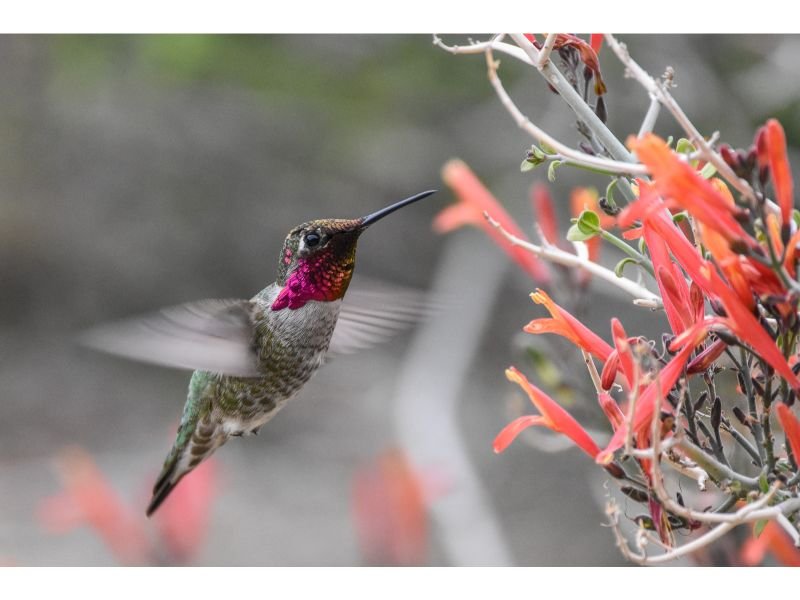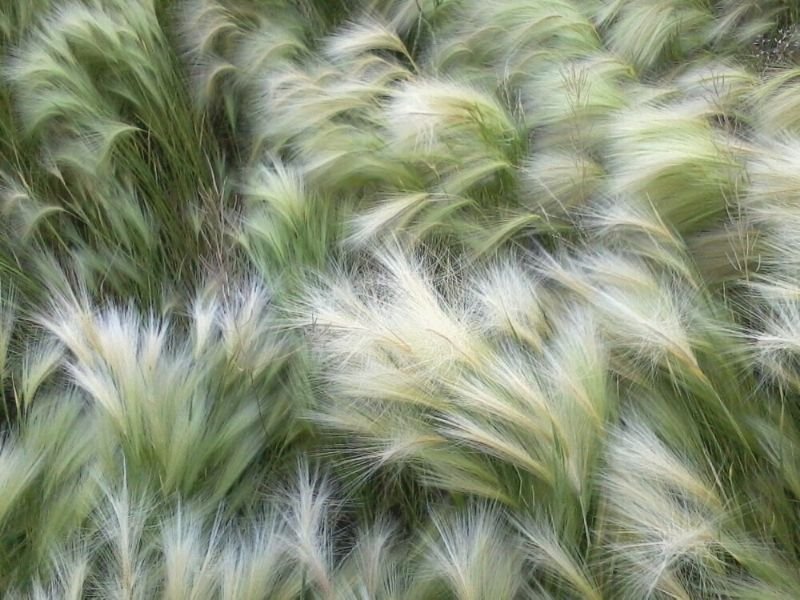Flowers that like clay soil are blessed with that unique ability to thrive in dense, compacted soil. These hearty blooms surely provide a burst of color and life to any garden despite the quite challenging growing conditions. Not only attractive, but these clay-soil-loving flowering plants are also generally easy to take care of, making them an ideal pick for anyone who is looking to add a pop of beauty to their clay-soil garden!
Table of Contents
Clay soil mineral structures.
| Mineral | Percentage in Clay Soil |
|---|---|
| Iron | Typically ranges from 10-20% |
| Aluminum | Typically ranges from 5-15% |
| Silica | Typically ranges from 15-25% |
| Calcium | Typically ranges from 2-5% |
| Magnesium | Typically ranges from 2-5% |
| Potassium | Typically ranges from 1-2% |
| Phosphorus | Typically ranges from 0.5-1% |
| Sulfur | Typically ranges from 0.5-1% |
Note: The exact mineral composition of clay soil can vary greatly depending on the location and geology of the soil. These percentages are rough estimates and should not be used as a definitive resource.

Characteristics of Clay Soil
Understanding the characteristics of clay soil is essential to comprehend the difficulties associated with it. Clay soil has a dense and compacted structure, making it difficult for plant roots to penetrate and access oxygen. Additionally, it has poor drainage properties, often leading to waterlogging and root rot. Furthermore, clay soil tends to bind nutrients tightly, making them less available for plant uptake.
The challenges of growing flowers on clay soil
Challenge 1: Soil Compaction
The compacted nature of clay soil poses a significant challenge to plant growth. It restricts root development, limiting the plant’s ability to absorb nutrients and water. To alleviate soil compaction, several techniques can be employed. One effective method is to incorporate organic matter such as compost or well-rotted manure into the soil. This practice improves soil structure, increases porosity, and promotes better root growth. Another approach is tilling the soil before planting, which helps loosen the compacted layers.
Challenge 2: Poor Drainage
Clay soil’s poor drainage capacity often leads to waterlogging, suffocating the plant roots and causing root rot. To improve drainage, raised beds can be created, allowing excess water to drain away more effectively. Another solution is to install drainage systems or channels in the garden to redirect water away from plant roots. By addressing the drainage issue, plants can thrive in clay soil without being constantly waterlogged.
Challenge 3: Nutrient Deficiencies
Clay soil has a tendency to bind nutrients tightly, making them less available for plants. This can result in nutrient deficiencies and hinder plant growth. To overcome this challenge, gardeners can incorporate soil amendments such as organic compost, aged manure, or peat moss. These amendments enhance nutrient availability and improve the overall fertility of the soil. Regular fertilization with balanced organic or slow-release fertilizers is also essential to provide plants with the necessary nutrients.
Selecting Plants Suitable for Clay Soil
While clay soil may present challenges, there are numerous plant species that thrive in these conditions. Many flower-loving plants have adapted to clay soil and can flourish despite its unique characteristics. Some examples include daylilies, asters, black-eyed Susans, and coneflowers. These plants not only tolerate clay soil but also enhance the aesthetic appeal of the garden with their vibrant blooms.
Here are our recommended flowers that like clay soil based on their blooming period, light needs, and their attractiveness to pollinators.
Perennials For Clay Soil and Shade
Summer Pheasant’s Eye (Adonis aestivalis)
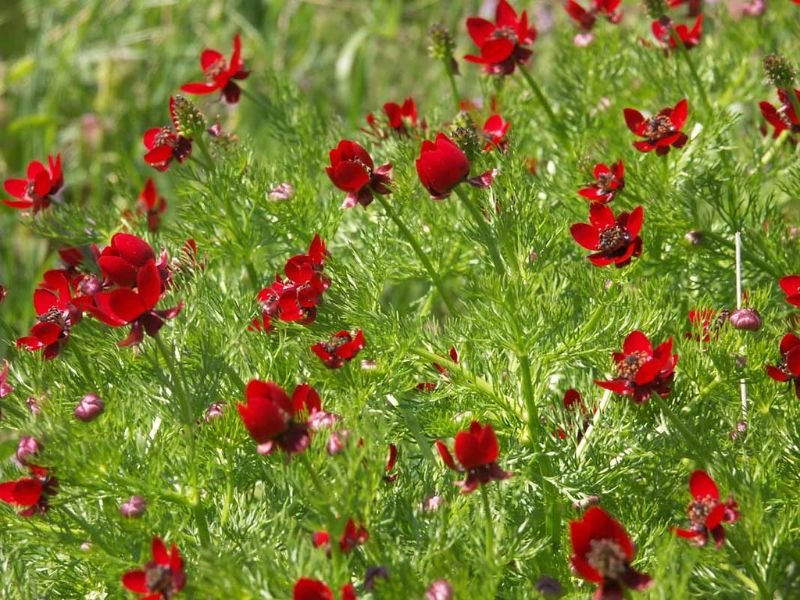
Zones: 3 to 7
Colors: Orange, yellow, burgundy
Height: 8 to 24 inches (20 to 60 centimeters)
Attractive Values: Can be grown as both annual and perennial, attract pollinators
Lighten up your nursery with some summer pheasant’s eye’s showy and bright cup-shaped flowers. These Mediterranean and Western Asia native flowers that like wet clay soil bloom beautifully during spring and summer.
Marsh Marigold (Caltha palustris)
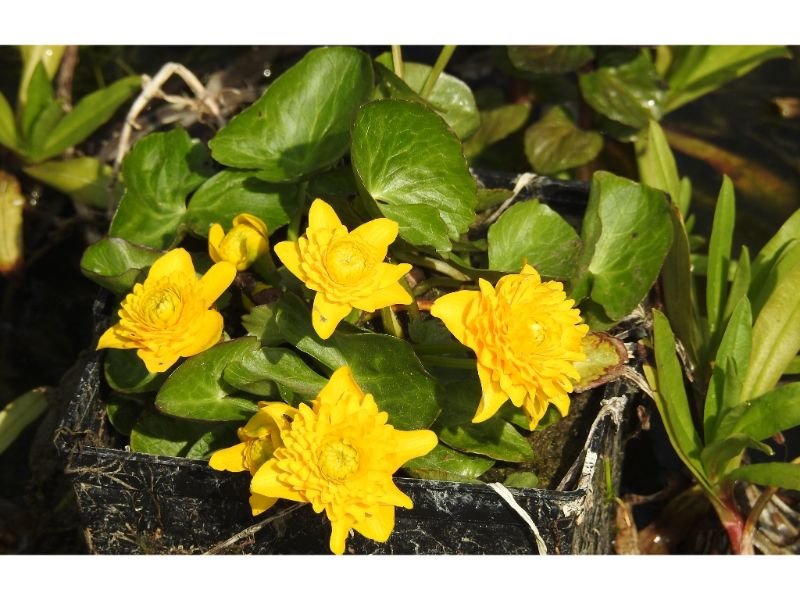
Zones: 3 to 7
Colors: Yellow or golden
Height: 8 to 16 inches (20 to 40 centimeters)
Attractive Values: Showy blooms, deer resistant
The classic marigold has long been favored by many gardeners, and its clay-soil-loving cousin, the marsh marigold, is no exception. They produce tiny blooms with dark green foliage and it’s a good addition to pond and rain-themed garden areas.
Lily of the Valley (Convallaria majalis)
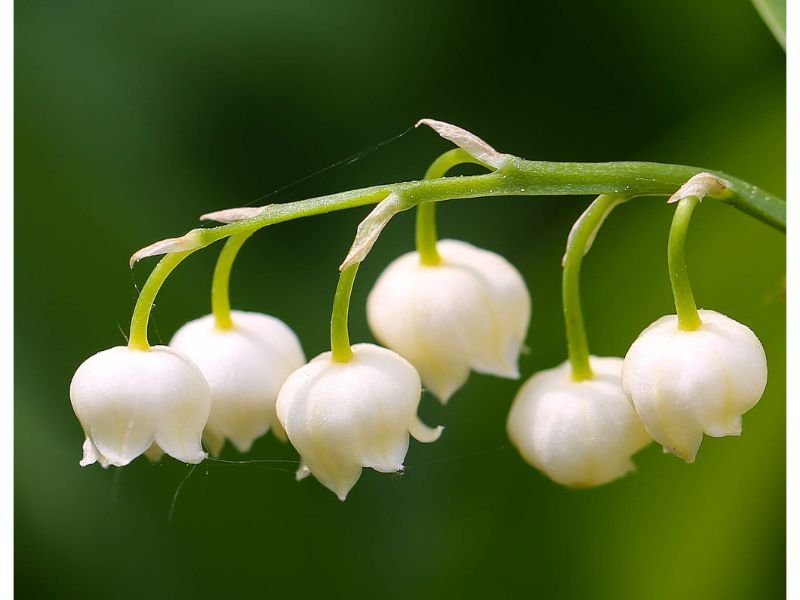
Zones: 3 to 7
Colors: White
Height: 8 to 12 inches (20 to 30 centimeters)
Attractive Value: Showy and fragrant blooms
Although the lily of the valley produces such tiny blooms in comparison to its large oval-shaped dark green foliage, these perennial flowers that like clay soil should not be missed. As natives of the Eurasia area, they prefer to thrive in cooler areas with less direct exposure to sunlight.
Flowering Perennials For Clay Soil and Full Sun
Paper Flower (Bougainvillea)

Zones: 9 to 10
Colors: Pink, purple, yellow, white, lavender
Height: 40 feet (12 meters) as vining/climbing plants, 20 inches (50 centimeters) as pot plants
Attractive Value: Showy blooms, dry soil tolerant, drought tolerant, heat tolerant
Bougainvilleas are flowers that like clay soil that needs lots of sunlight to thrive. When grown in areas with less sunlight, this tropical charming beauty’s growth will decrease and with less bloom production.
Canna Lily (Canna)

Zones: 6 to 10
Colors: Yellow, orange, red, pink, and any other variegated colors
Height: 36 to 60 inches (90 to 150 centimeters)
Attractive Value: Showy blooms, wet soil resistance, tolerance to heat and humidity
Other tropical-looking flowers that like clay soil to add to your wish list, canna lilies are famous for their attractive and showy blossoms. There are more than 10 cultivated species available to meet your taste and color!
Purple Coneflower (Echinacea purpurea)
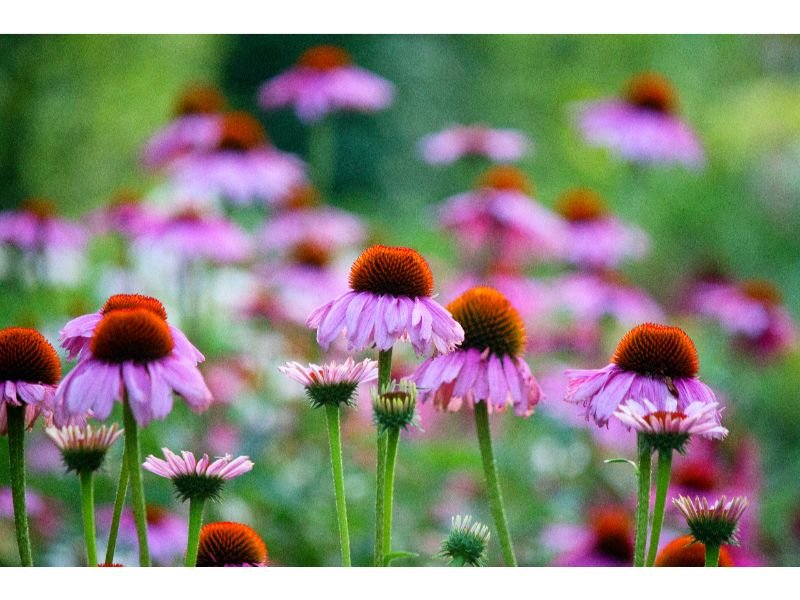
Zones: 3 to 8
Colors: Purple, salmon, yellow, white, pink, red, brown
Height: 24 to 60 inches (60 to 150 centimeters)
Attractive Value: Showy blooms, good cut, attract pollinators
The easy-to-maintain flowering plants from the Aster Family and purple coneflowers have also been used as part of traditional medicines to treat various illnesses. These summer-blooming plants thrive not only in clay soil, but also in loamy, sandy, or even rocky soil!
Annual Flowers That Like Clay Soil and Shade
Calendula (Calendula officinalis)
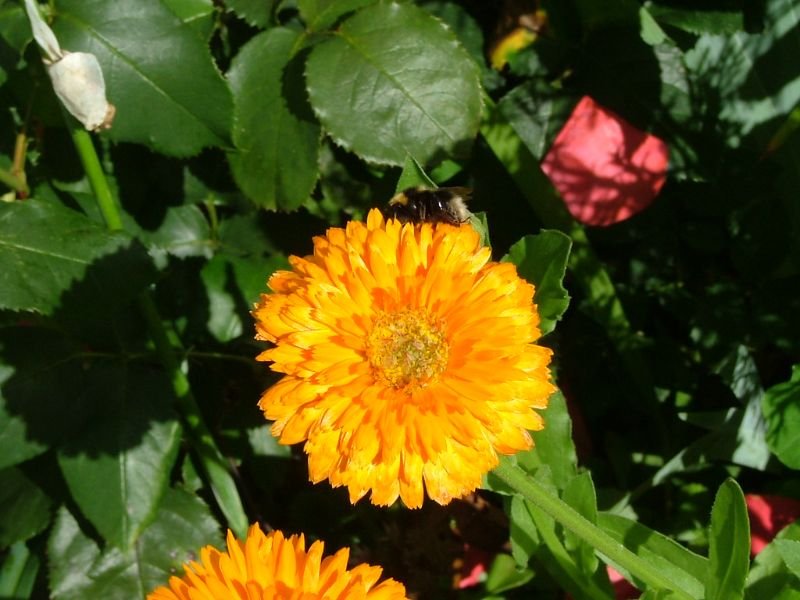
Zones: 2 to 11
Colors: Yellow, orange, red
Height: 10 to 12 inches (25 to 30 centimeters)
Attractive Value: Showy blooms, attracts pollinators and butterflies, good cut
Also known as holligold, calendulas are stunning flowers that like wet clay soil and are adaptable to grow in most growing conditions. They’re safely edible and research has found that calendulas are even used to treat swellings, ulcers, or even skin tumors.
African Marigold (Tagetes erecta)
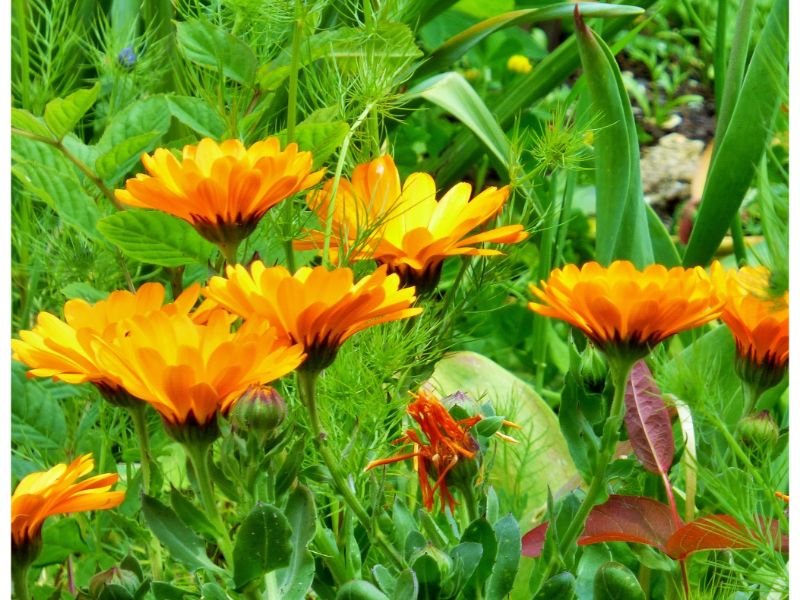
Zones: 2 to 11
Colors: Orange, yellow, red, white, and variegated colors
Height: 12 to 48 inches (30 to 120 centimeters) depending on each cultivar
Attractive Value: Showy blooms, and fragrant flowers, attract butterflies
These native to Mexico and Guatemala flowers are favored not only for their roundish, pom-pom-like blooms but also for their ease of maintenance. Plant them in your garden, and the eye-catching African marigold will bloom all season long.
Cock’s Comb (Celosia globosa)
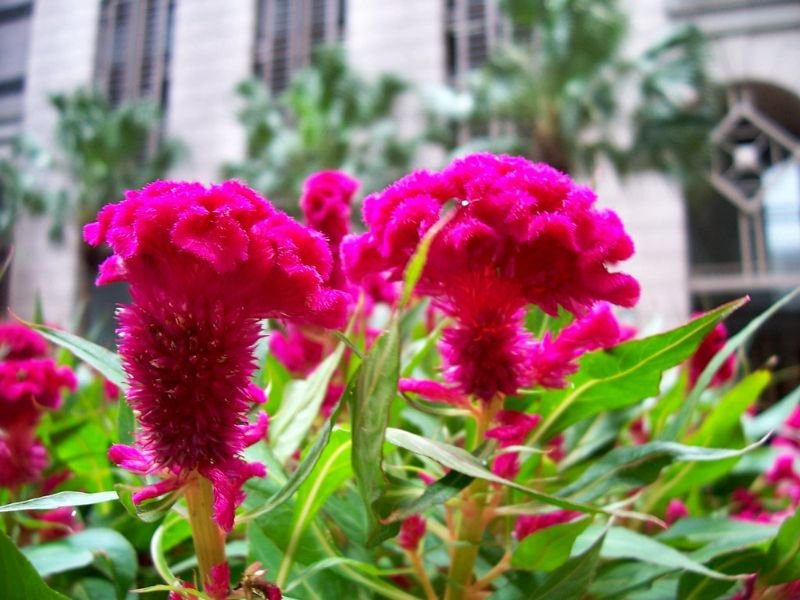
Zones: 10 to 11
Colors: Red, yellow, lavender, golden, pink, burgundy
Height: 10 to 32 inches (25 to 80 centimeters)
Attractive Value: Showy blooms, drought tolerant, humidity tolerant, good cut
Cock’s comb is an exotic-looking flower that is not only a good cut but also makes good dried flowers. Whether your garden space is massive or tiny, cock’s comb can be grown in both areas and is also good for containers and pots.
Full-sun and Clay Soil Loving Annuals
Phlox (Phlox)
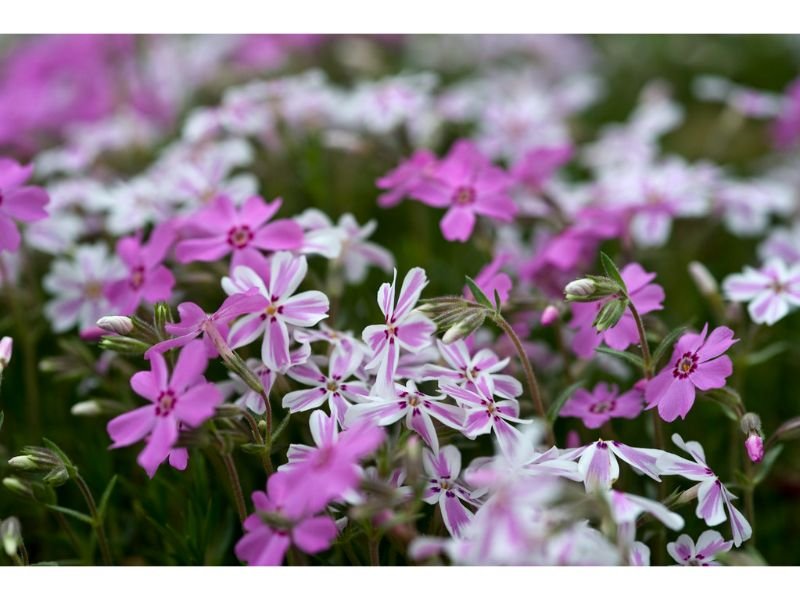
Zones: 3 to 9
Colors: Pink, lavender, purple, white, red
Height: 2 to 3 feet (60 to 90 centimeters)
Attractive Value: Showy blooms, good cut, fragrant
Looking for ground-covering flowers that like clay soil? See no other but phlox. This easy-to-maintain flower has a long period of blooming season and it also has over 60 species ranging in various colors and sizes.
Black-eyed Susan (Rudbeckia hirta)
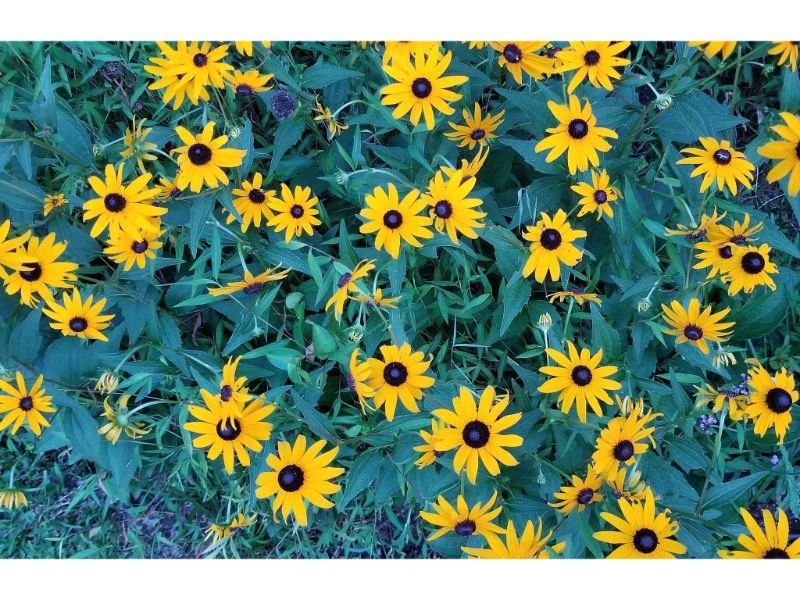
Zones: 3 to 8
Colors: Yellow, orange, burgundy, or any other variegated colors
Height: 18 to 48 inches (45 to 120 centimeters)
Attractive Value: Showy blooms, good cut
The black-eyed susans are loved for their aster-like blooms and dark seed heads or centers. A little fun fact, the black-eyed susan is considered a pioneer plant, the first plant that naturally grows in damaged areas after a fire or natural disaster like tornadoes.
Hoary Stock (Matthiola incana)
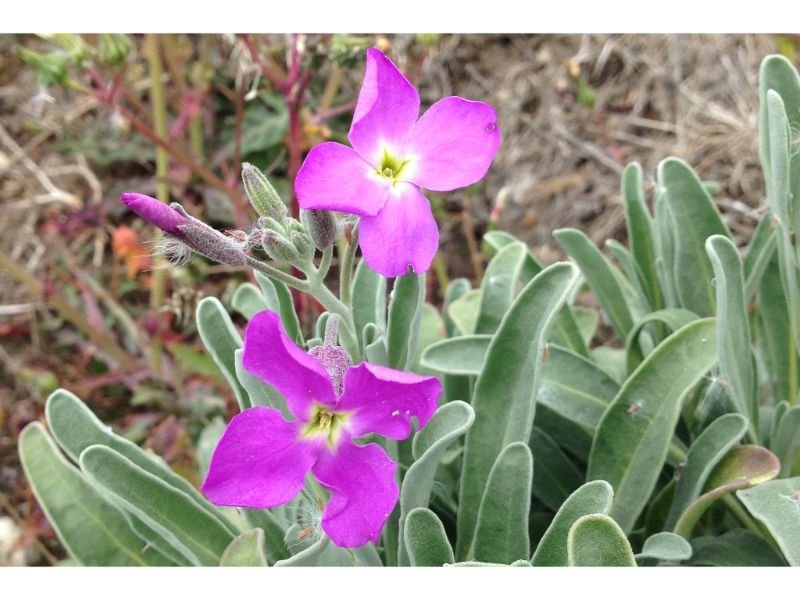
Zones: 7 to 10
Colors: Blue, lavender, red, pink, white, yellow, golden
Height: 15 to 30 inches (40 to 80 centimeters)
Attractive Value: Showy blooms, deer resistant
This delicate beauty from the cabbage family (Brassicaceae) is kind of underrated. Once planted, these flowers that like clay soil don’t require much but to be placed in areas with lots of sunlight, less humidity, and well-draining soil.
Pollinators and Bee-Friendly Flowers That Like Clay Soil
Tickseed (Coreopsis grandiflora)

Zones: 4 to 9
Colors: Yellow, dark burgundy center
Height: 18 to 24 inches (45 to 60 centimeters)
Attractive Value: Showy blooms, attract pollinators and bees
Tickseeds are must-have perennial flowers that like clay soil if you want to invite pollinators to your nursery. As colorful as their color, this native to Canada and American flowering plants prefer bright but indirect sunlight.
Siberian Iris (Iris sibirica)
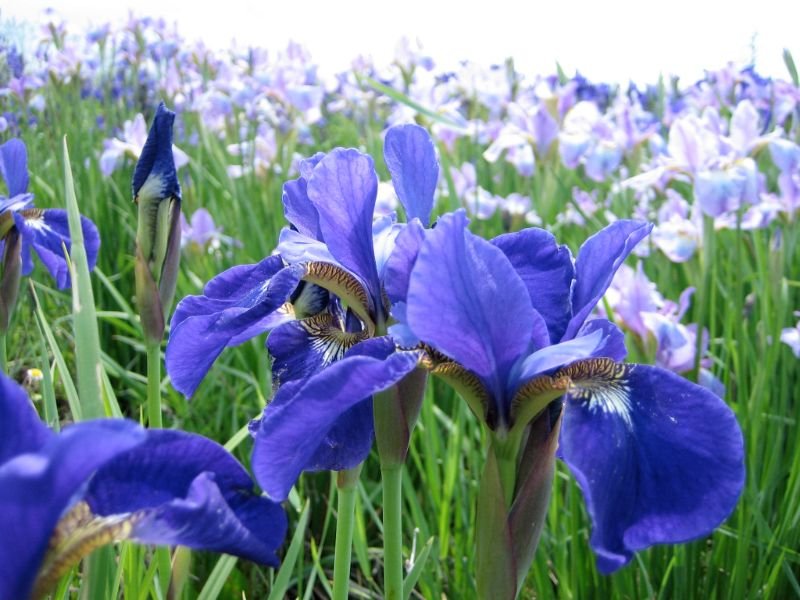
Zones: 3 to 8
Colors: Blue, lavender, purple, white, burgundy, yellow, pink
Height: 12 to 40 inches (30 to 100 centimeters)
Attractive Value: Showy blooms, rabbit tolerant, poor soil tolerant, deer tolerant
Siberian irises are glorified for their elegant flowers that are somewhat resistant to diseases. These flowers that like clay soil will grant you with their long blooming season, but be aware, all parts of the Siberian irises are toxic.
Blazing Stars (Liatris)

Zones: 3 to 9
Colors: Purple, lavender, white
Height: 24 to 72 inches (60 to 182 centimeters)
Attractive Value: Showy blooms, drought tolerance
Also known as the gay feather, blazing stars are tall perennials with spiky flowers that grow upright. Part of the aster family, they might not look like aster at all, but these clay-soil-loving flowers are easy to maintain and just as breathtaking as their aster counterparts!
Solutions and Tips
Preparation and Planting Techniques
Proper preparation of clay soil is crucial for successful plant growth. Before planting, it is beneficial to break up compacted soil using a garden fork or tiller. This allows for better aeration and root penetration. Additionally, incorporating organic matter into the soil improves its structure and nutrient content. When planting, ensure proper spacing between plants to allow for healthy root development and minimize competition for resources.
Regular Soil Testing and Monitoring
Regular soil testing is essential for understanding the nutrient levels and pH balance in clay soil. Testing kits are readily available and provide valuable insights into soil conditions. Based on the test results, necessary adjustments can be made, such as applying specific fertilizers or adjusting pH levels. Monitoring the soil moisture content is also crucial, as clay soil tends to retain water for longer periods. Proper watering techniques should be employed to prevent overwatering or drought stress.
Mulching Benefits for Clay Soil
Mulching is a beneficial practice for clay soil gardens. Applying a layer of mulch around plants helps retain moisture, regulate soil temperature, and suppress weed growth. Organic mulches like straw, wood chips, or compost can gradually break down and improve the soil structure over time. It is important to choose mulch materials that do not compact the soil further or retain excessive moisture, as this can exacerbate the challenges associated with clay soil.
Managing Erosion on Clay Soil
Clay soil is susceptible to erosion, especially during heavy rainfall or when slopes are present. Implementing erosion control methods can help minimize soil erosion and preserve the integrity of the garden. Ground covers such as grass, clover, or low-growing plants can be established to stabilize the soil and reduce runoff. Terracing or creating retaining walls on slopes can also prevent erosion by diverting water flow and reducing the impact of runoff.
Pest and Disease Management
Clay soil can create favorable conditions for certain pests and diseases. Slugs, snails, and fungal diseases like powdery mildew are common challenges faced in clay soil gardens. Implementing proper pest and disease management practices, such as regular inspection, removal of infected plant material, and using organic pest control methods, can help minimize the impact of these issues. Additionally, choosing disease-resistant plant varieties can reduce the risk of infections.
Bring Some Flowers That Like Clay Soil For Your Garden
Flowers that like clay soil are evidence of the versatility of nature. Despite being adaptable to grow in such growing conditions, they are still able to put on a magnificent display of colors and fragrances. With proper care and attention, these clay-loving flowers will reward you with a stunning garden. Moreover, be sure to always provide them with a good drainage system. Happy Gardening!

New author in the hood. Loves gardening and flowers are my spirit animals (yes I know they are not animals but I insist). I will be covering most of the flowers’ topics here and occasionally random though as well.

